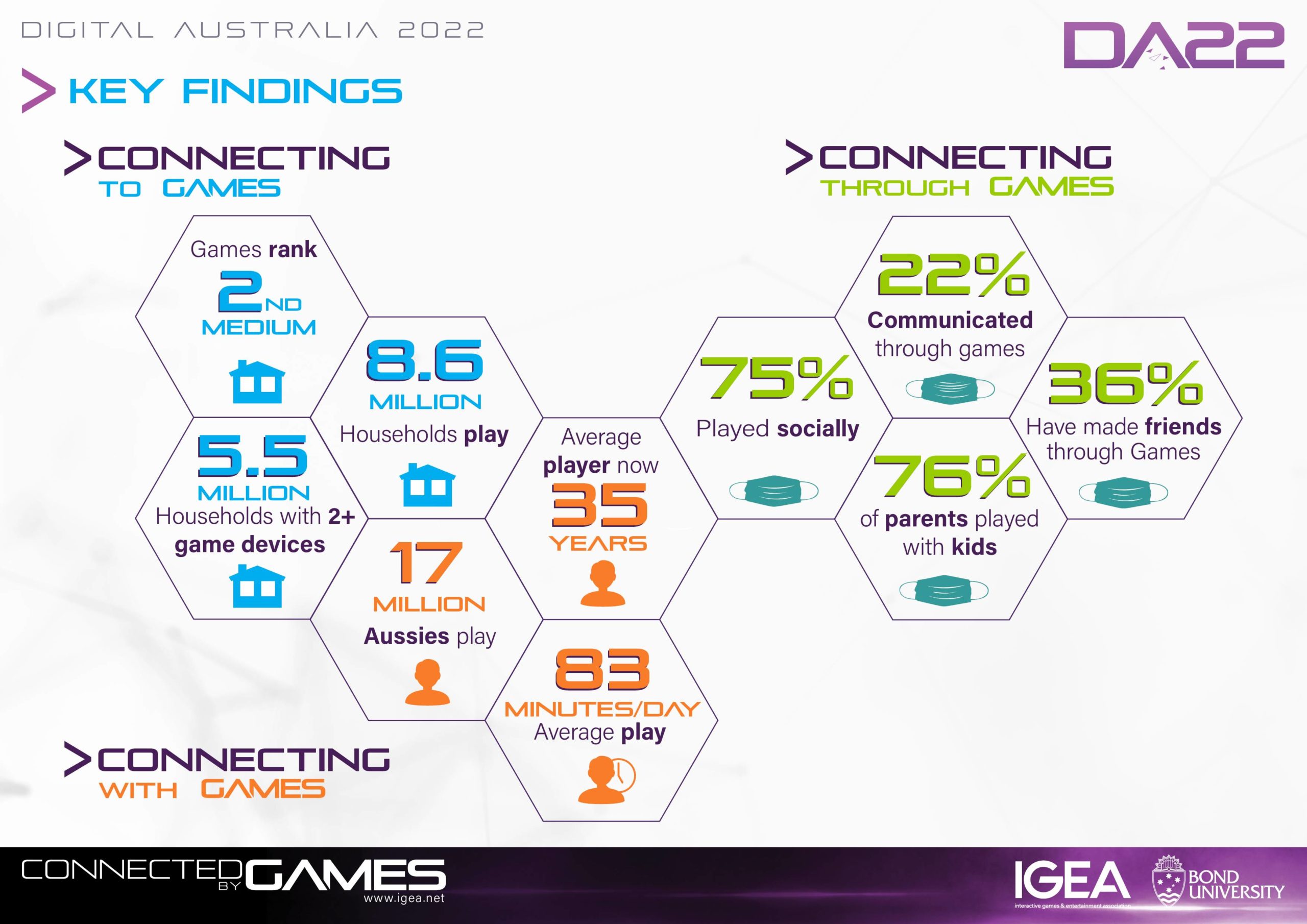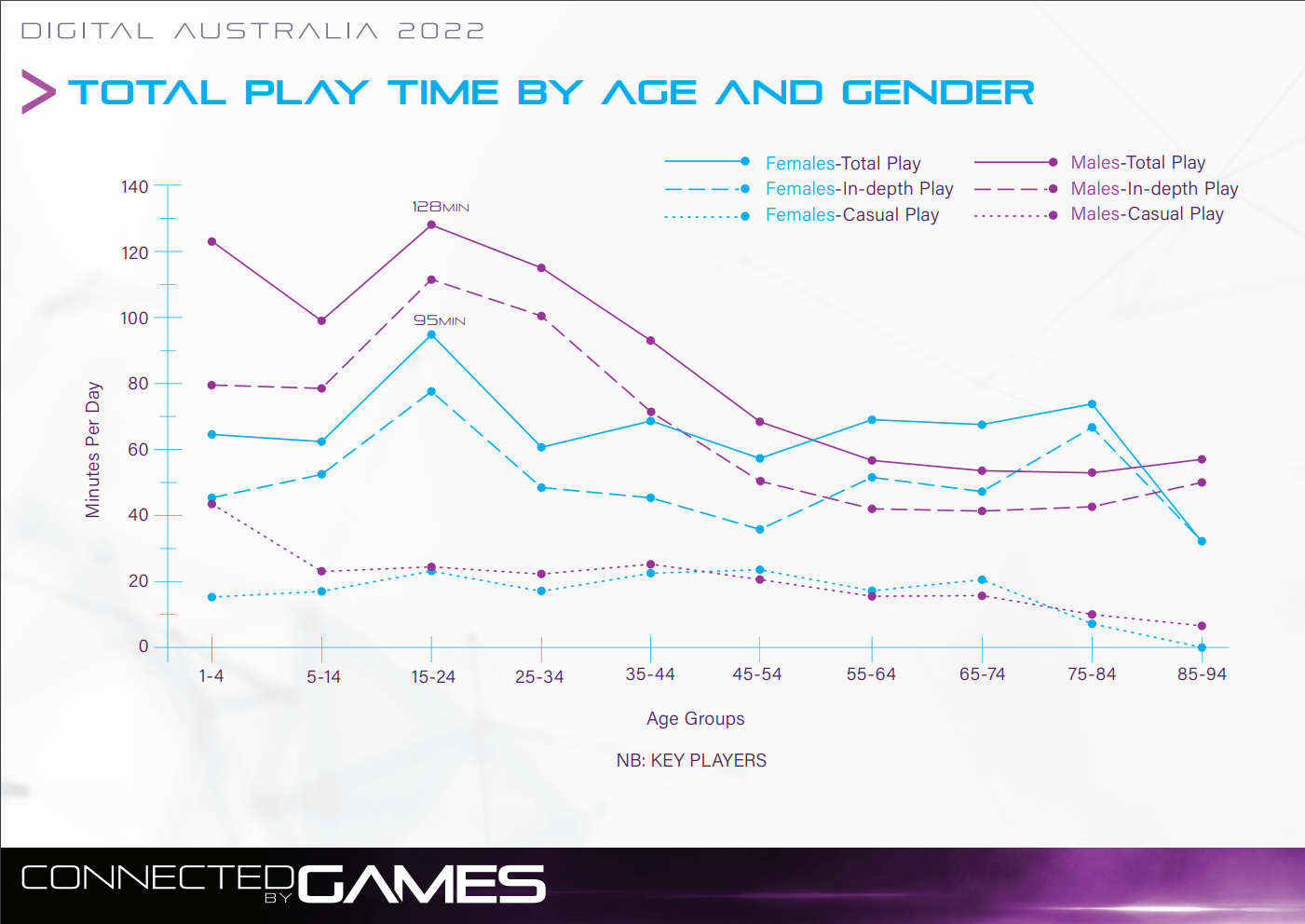If it wasn’t already clear from the studies of years past, Australians love video games. That’s only been further affirmed by Bond University’s regular Digital Australia report, which has found that 17 million Australians play video games in some form.
The figure comes from the latest Digital Australia study, which is conducted by Bond University every couple of years. The studies have been conducted by Professor Jeff Brand, the Australian professor who has been contextualising for over a decade not just how many Australians play video games, but when they play them and why.
This year’s Digital Australia Report is the first exhaustive report into Australia’s video game habits throughout the pandemic. Unsurprisingly, the report focuses a lot on gaming as a social connection throughout the COVID crisis, with 76 percent of parents surveyed playing some form of video games with their children throughout. Around 3,152 Australians across 1,204 households were surveyed for the report, with those surveyed being randomly selected from the Nielsen Your Voice Panel in March 2020.
But the largest figure are the macro stats on how connected Australians are with video games. The average age of the Australian video gamer is now 35, having steadily risen as the generation that grew up with the Game Boy, NES, SNES, PlayStation 1 and early PCs become adults and parents themselves. (Click the image below to view in full.)
Around 17 million Australians play video games in some form, with 5.5 million households owning two or more devices dedicated to video games. 92 percent of Australian households now own at least one device which can play video games, although given the proliferation of smartphones and Australia’s historical appetite for tech as early adopters, that’s not the most surprising statistic.
Perhaps the more interesting element, though, is the social aspect: 36 percent of those surveyed have made friends through video games, while three-quarters play video games purely as a social activity.
Another interesting nugget here is the time spent playing among working adults: it’s fallen a fraction to 82 minutes/day, a minute below what it was pre-pandemic. It would have been normal to see Australians spend more time with video games because of the pandemic, especially with other social activities banned during lockdown.
What’s just as likely here is that both scenarios are true: regular gamers have spent more time with video games over the last two years, but the growth in the Australian video game population has brought in more folks who play a lot less on average, which would bring the average session times down.
The Digital Australia 2022 report has more granular data on how video games are played in people’s homes, and where it ranks as an overall activity. By Bond University’s metric, video games are now the second most common activity in a household after TV/movie streaming services, surpassing free-to-air television, YouTube, listening to music, books, radio, podcasts or magazines.

Consoles are still the most popular video game device too, with 68 percent of households owning one, and 53 percent of households owning a PC. 48 percent of households surveyed had a subscription to some form of gaming service (Game Pass, PlayStation Plus etc.), while only 6 percent of households had a VR headset.

Video games were the most popular among 15-24 year olds, followed by 5-14 year olds, 25-34 year olds, then 35-44 year-olds. Interestingly, video games are becoming increasingly more popular among older Australians — Bond University’s survey picks up a drop-off in video game interest at the 75-84 year old demographic, but that picks back up against amongst the 85-94 year old crowd.

Males tend to play more than females (94 minutes to 70 minutes a day), while retirement-age adults tend to play for just over an hour a day. Children play for a lot longer at 106 minutes a day on average, and the average daily total playtime for all Australians is 83 minutes per day. That figure has risen by two minutes since the last pre-pandemic figures, with increased playtime in children and a slight uptick in retirement-age Aussies accounting for the increase.
The impact of the pandemic, naturally, was the focus for a good chunk of Bond’s research this time around. The key figure was the friendship gained, with a third of parents turning to video games as virtual escapism or tourism, and 36 percent of those surveyed saying they had made new friends through video games.
“A third of those who play video games said they expected to be playing more after the pandemic,” the report adds. There’s also further debunking of the classic gamer stereotype: only 25 percent of those who play video games do so alone, without any other form of social or virtual connection.
When asked why they play video games, the majority of Australians across all demographics said it was purely to have fun. Australians across all ages also nominated video games as a great way to keep the mind active, while younger Australians were more likely to play video games to relieve boredom or “feel excitement”. Curiously, the 35-64 and 65+ age groups were more likely than younger Australians to play video games to “be challenged”, which could be an interesting insight into what the broader Australian demographic wants from their video game experience.

Casual games are the most popular in Australia, although it’s probably more accurate to say action and adventure are the most popular genres given casual games often incorporate elements from those two (and typically at the same time). First person shooters ranked equal 4th along with online games, while simulators and RPGs were miles down the list at 9th and 10th.

Games are also more commonly used in school these days. 60 percent of parents surveyed said their children played games for some part of their school curriculum, while 36 percent said their children were developing games as part of their learning. 36 percent also said games were being used for co-curricular activities.

More adults will now turn to YouTube and the internet for help wen playing video games as well. 68 percent of adult game players surveyed said they read or watch walkthroughs online, with 56 percent watching gameplay on YouTube and 46 percent watching livestreams in some form.
More people surveyed watch livestreams of gameplay than they did esports — 46 percent to 45 percent — while only 42 percent of adult game players used forums.

The full study from Bond University will be released on the IGEA website later today, although a summary of the report is available now here.



Leave a Reply